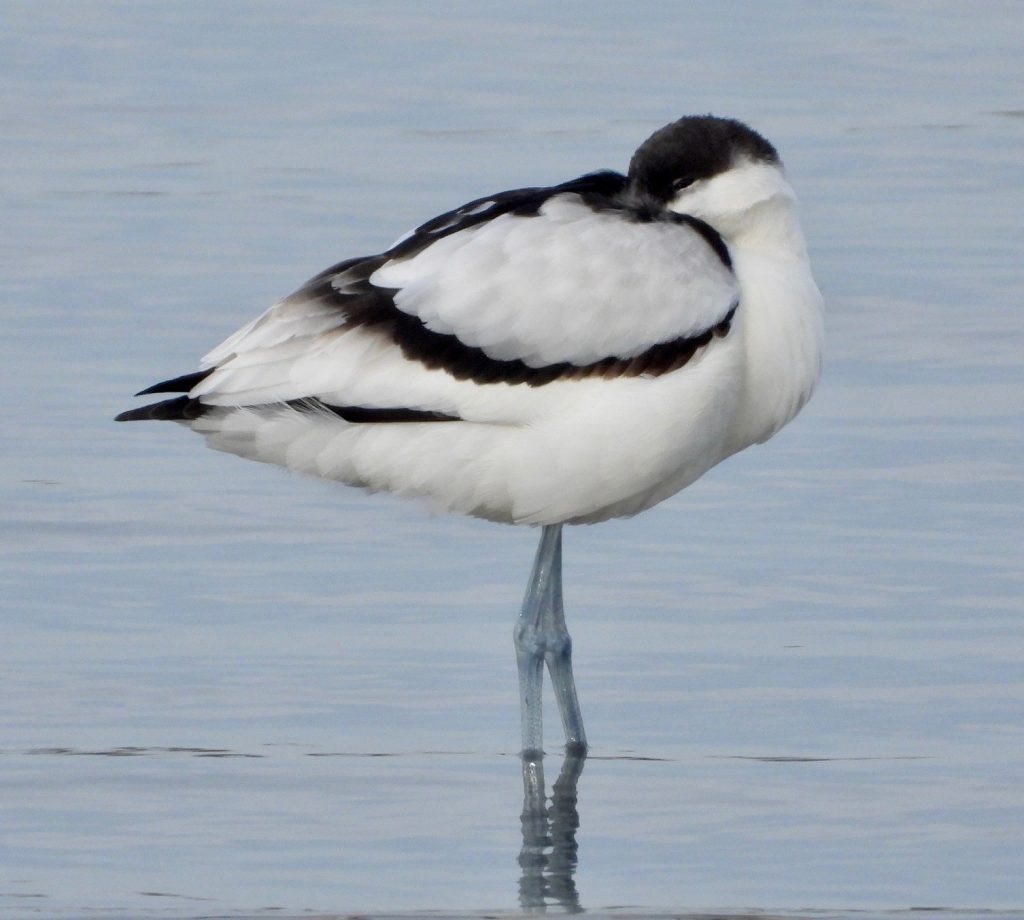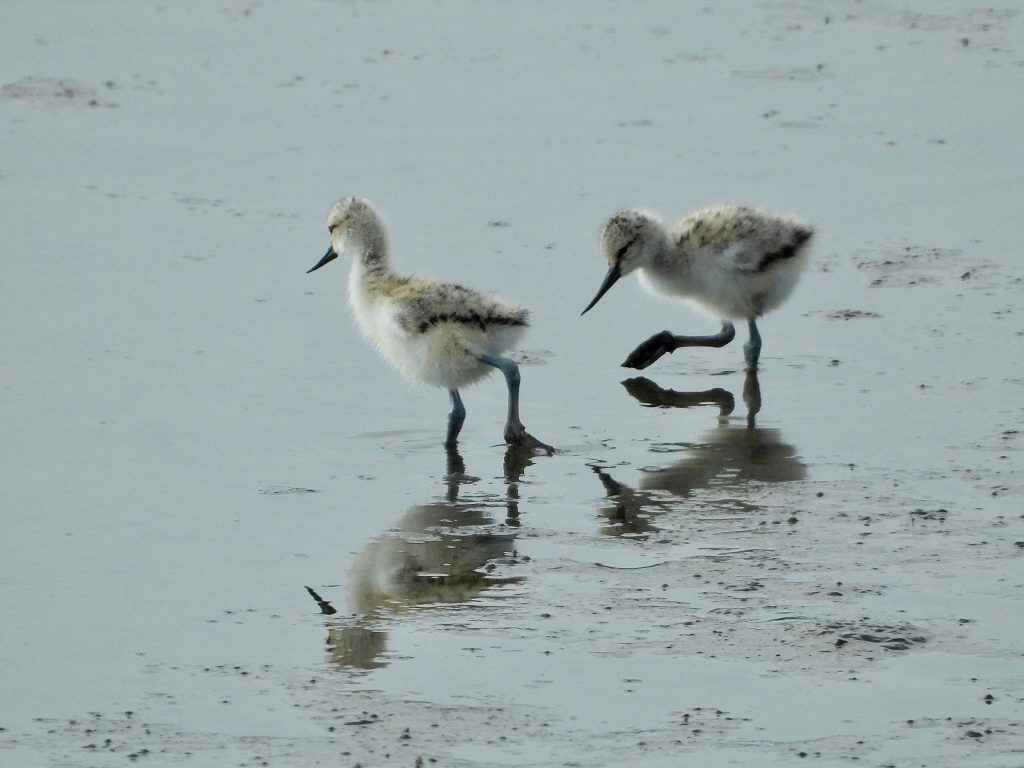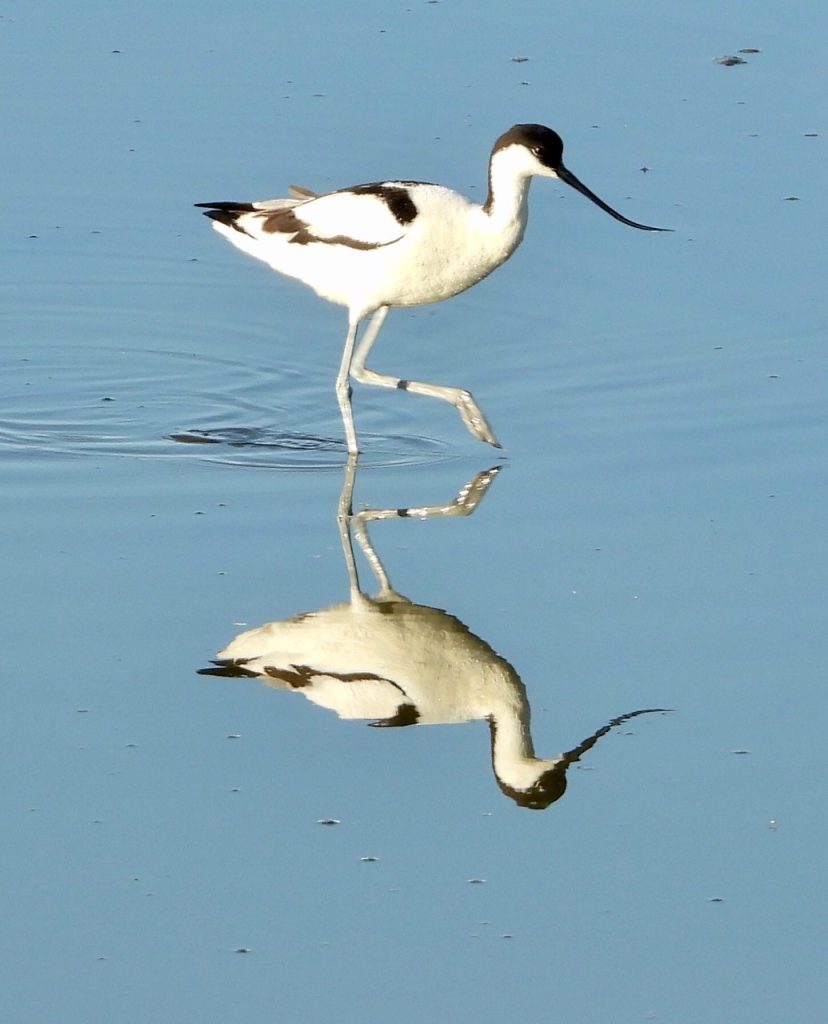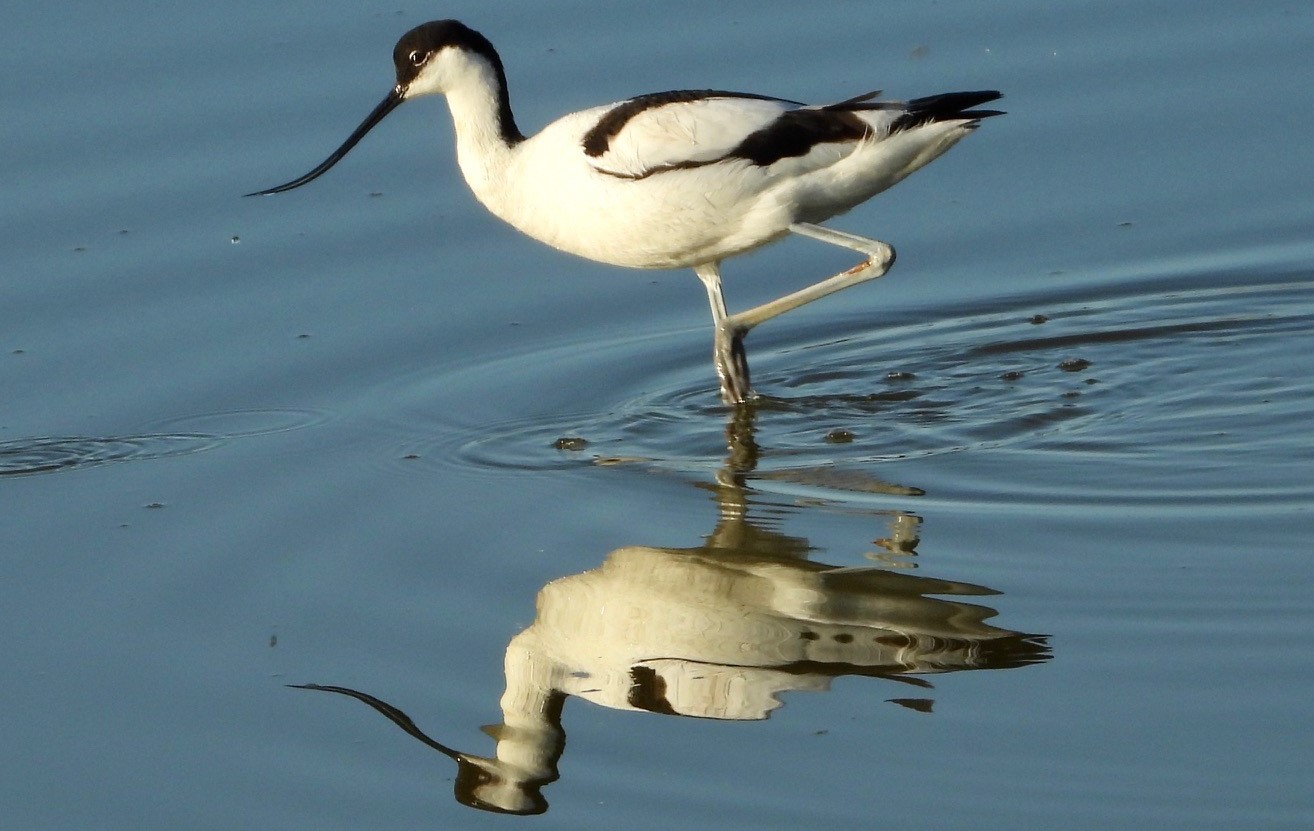This summer a few pairs of Avocets have successfully bred within Chichester Harbour; the Avocet chicks have been “colour ringed” to help track them and provide important conservation data for the future.
Early one June morning, a team led by Pete Potts, a licenced bird-ringer, gathered at Snowhill Marsh on the edge of Chichester Harbour. They’re here on a special mission, to attach coloured rings to the legs of the recently-hatched and undeniably cute fluffy Avocet chicks. But why?
What do the colour rings on birds tell us?
Have you ever wondered how scientists and ecologists know so much about the lives and habits of different birds? Whether it’s how long they live for, where they migrate to or who they pair up with, the data often comes from “ringing”. By attaching rings (often coloured for easy identification) to a bird’s legs, sightings can be reported and individual birds monitored. Co-ordinated and licensed by the British Trust for Ornithology, the ringing provides vital data on the survival, productivity and movements of birds, to help us understand why populations are changing and inform how we may help protect them.
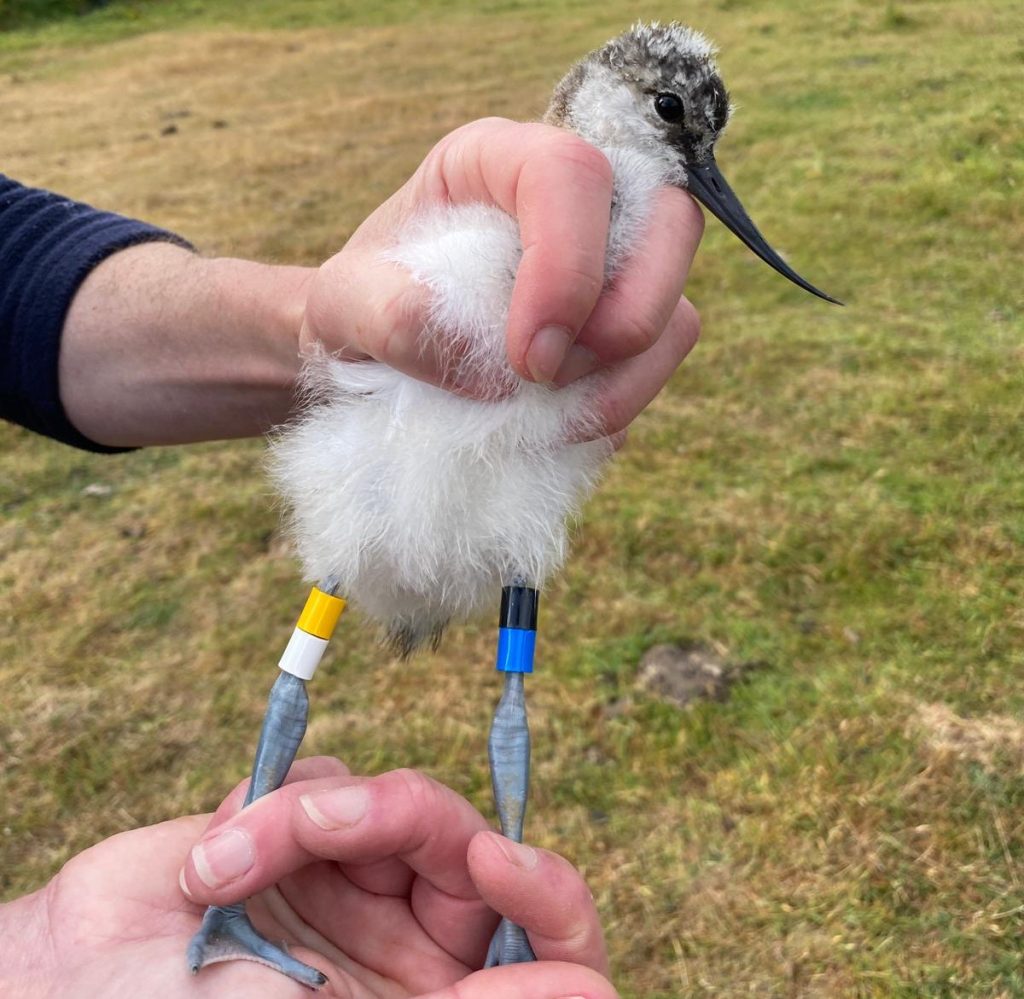
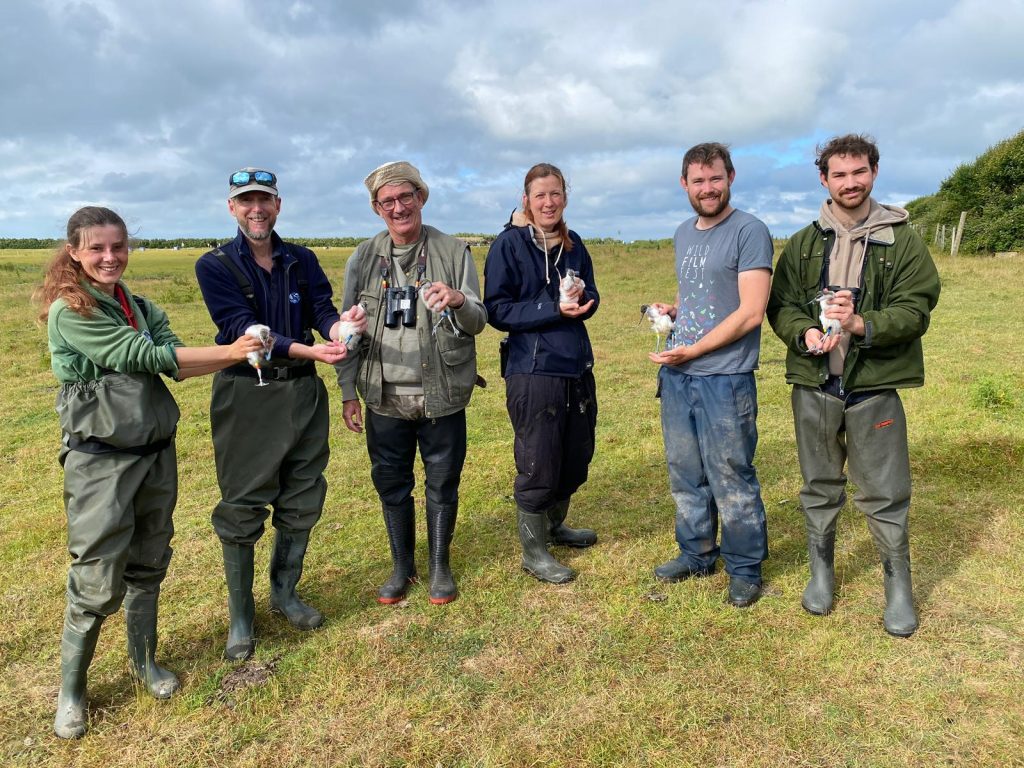
The Ringing:
Back to Snowhill Marsh…
The team don their waders… ringing Avocets is wet and muddy work. The operation has been planned with military precision, starting back in April with our Ecologist, Pete Hughes carefully monitoring the site. Timing is key, the Avocet chicks need to be 2-3 weeks old – big enough to be handled, young enough that they haven’t yet fledged, which would make catching them impossible.
Two spotters are issued radios – their job is to keep their eyes on the young Avocets, and relay position information. The rest of the team encircle the Avocets, and when the signal is given, they close in…
Immediately the parents take flight, noisily sounding the alert. The chicks adopt their usual response to danger, which is to squat down, hiding within the marsh. Here the spotters information proves vital, allowing the rest of the team to carefully pick up each Avocet chick. The chicks are then taken to the shore, where they are weighed and measured – bill, legs and wings. Pre-designated coloured rings are then attached to their legs – each bird has a unique combination of colours on their left and right legs, as well as a silver ring with a specific code. This whole process is done quickly and efficiently, to minimise any distress to the parents and chicks alike.
Then it’s time for release; the Avocets are returned to the shoreline and carefully set down. They head towards their parents, casually feeding as they go. The birds are then monitored from the shore for a time, to check no harm has been caused.
A family history:
In total, eight chicks were ringed this year. We later observed that two of the parents were also colour-ringed birds. One of the parents was ringed as a chick in 2019, across the Solent on the Beaulieu River. It has been seen every summer in Hampshire, and overwintered at least twice on the Exe Estuary in Devon. This is the first year it has attempted to breed here in Chichester Harbour; we are hopeful that success in fledging chicks will lead to repeat visits in future years.
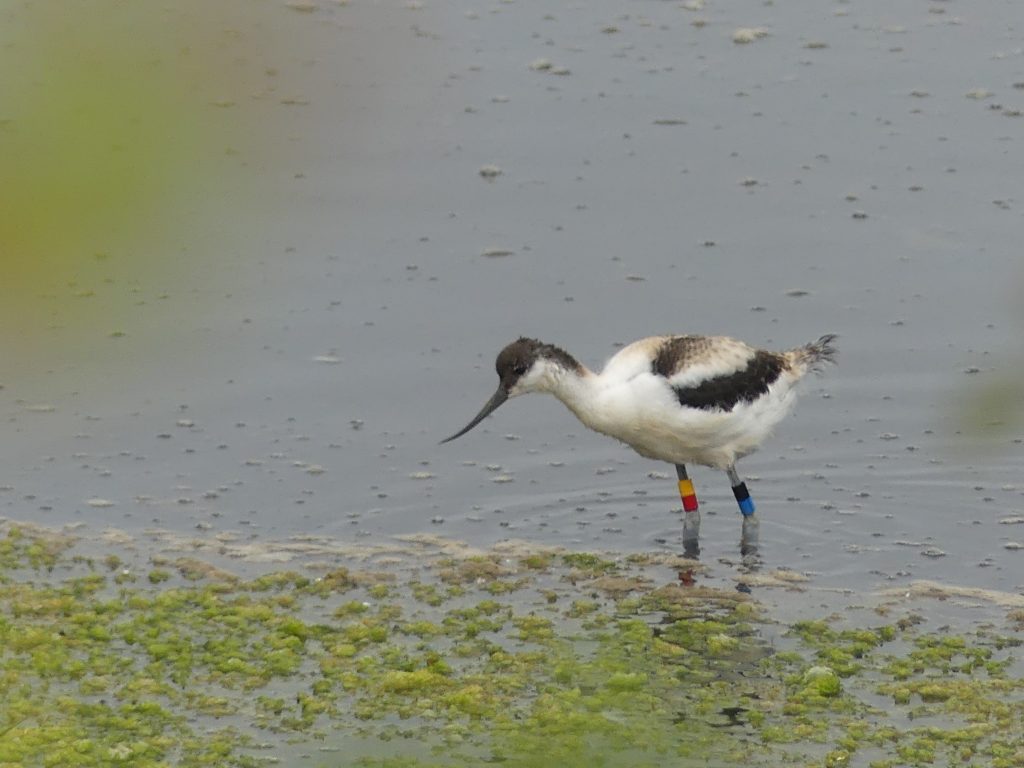
Citizen Science – Over to you…
A special licence issued by the British Trust for Ornithology is required to handle and ring birds; it can take years to become trained in this delicate work. But the important data from the rings can be captured by anyone with eagle eyes and a pair of binoculars. If you see a colour-ringed bird, take a careful note of the ring colours, or even better a clear photograph.
They are read left leg to right leg, top to bottom. So in this image, NB+YR (which means – left leg: black over blue, right leg: yellow over red. Visit the BTO website to report any sightings.
The future…
Avocets have been breeding regularly in Chichester Harbour since 2020; they are a rare success story of breeding shorebirds, when so many of our species are under pressure from sea level rise and recreational disturbance. We are working hard with partners to provide protected habitats for our birds, as well as balancing human recreation with spaces for nature. Find out more about our work here.
